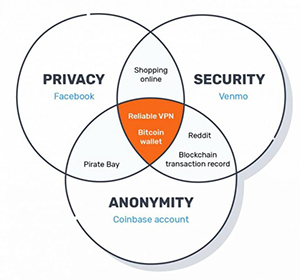Anonymity & Security

Contents
Transactions
The using of bitcoin is an excellent way to donate money, make your purchases and pay p2p without losing money through inflated transaction fees, however, those transactions are never truly anonymous. Buying Bitcoin you pass identification, Bitcoin transactions are stored publicly and permanently on the network, which means anyone can see the balance and transactions of any Bitcoin address. Bitcoin activities are recorded and available publicly via the blockchain, a comprehensive database which keeps a record of bitcoin transactions.
To better understand the anonymity of Bitcoin, it is important to first understand how this cryptocurrency works at a basic level. First of all, the Bitcoin Protocol consists of a series of transactions. These transactions are inherently packets of different data types, including inputs and outputs. The inputs refer to the bitcoin addresses from which the coins are sent (for which you need to use the private key associated with such address). The outputs are related to the addresses to which bitcoin is sent. During each bitcoin transaction, bitcoins go from one or more inputs to one or more outputs (so bitcoins are sent from one or more addresses to one or more other addresses).
A transaction can have one entry and one exit. However, this is a rare case, since for this the amount of bitcoins sent (output) must be equal to the amount of previously received bitcoins (input). More often than not, a transaction consists of many small entries. For example, if someone has three different entries for one bitcoin and needs to send 2.5 bitcoins to an online store, the software will merge all three entries into one transaction. Even more often, a transaction consists of multiple exits. This is because Bitcoin uses the so-called address for delivery. Such addresses allow users to create a transaction that returns surplus bitcoins from inputs to the sender. Thus, in the above example, the program will create two outputs. To one output will include a 2.5 bitcoins sent to that online store’s address, while another solution will contain 0,5 bitcoins sent to a new generated address of the sender.
Buying/selling bitcoins
All exchanges require the user to scan ID documents, and large transactions must be reported to the proper governmental authority. When you use Bitcoin to pay for goods and services, you will of course need to provide your name and address to the seller for delivery purposes.
This means that a third party with an interest in tracking your activities can use your visible balance and ID information as a basis from which to track your future transactions or to study previous activity. In short, you have compromised your security and privacy.
Whatever way bitcoins not arrived at your address, the network broadcasts a message to all the miners that those bitcoins formerly belonging to one address now belongs to your. The wallet software signs the transaction with a secret key, allowing miners to verify its authenticity. When transferring funds, the owner of bitcoin electronically signs his transaction, so each bitcoin has a mathematically verified history of ownership. This may look secure, but it’s not enough, as the bitcoins you are transferring can be a copy of the bitcoins you have already spent. This prevents a single database of all transactions. This is the main essence of bitcoin, so it is safe.
Mixing services
Mixing services are used to avoid compromising of privacy and security. Mixing services provide to periodically exchange your bitcoins for different ones which cannot be associated with the original owner.